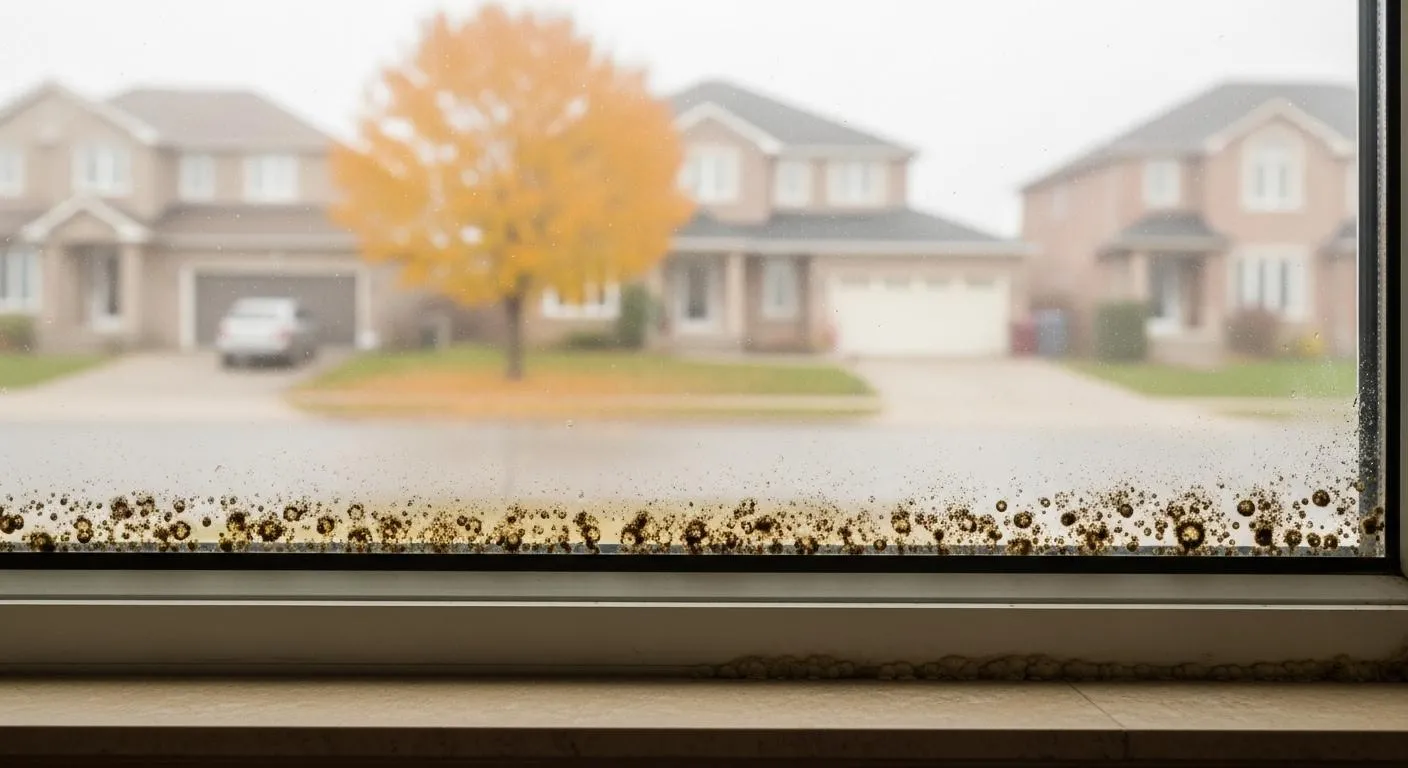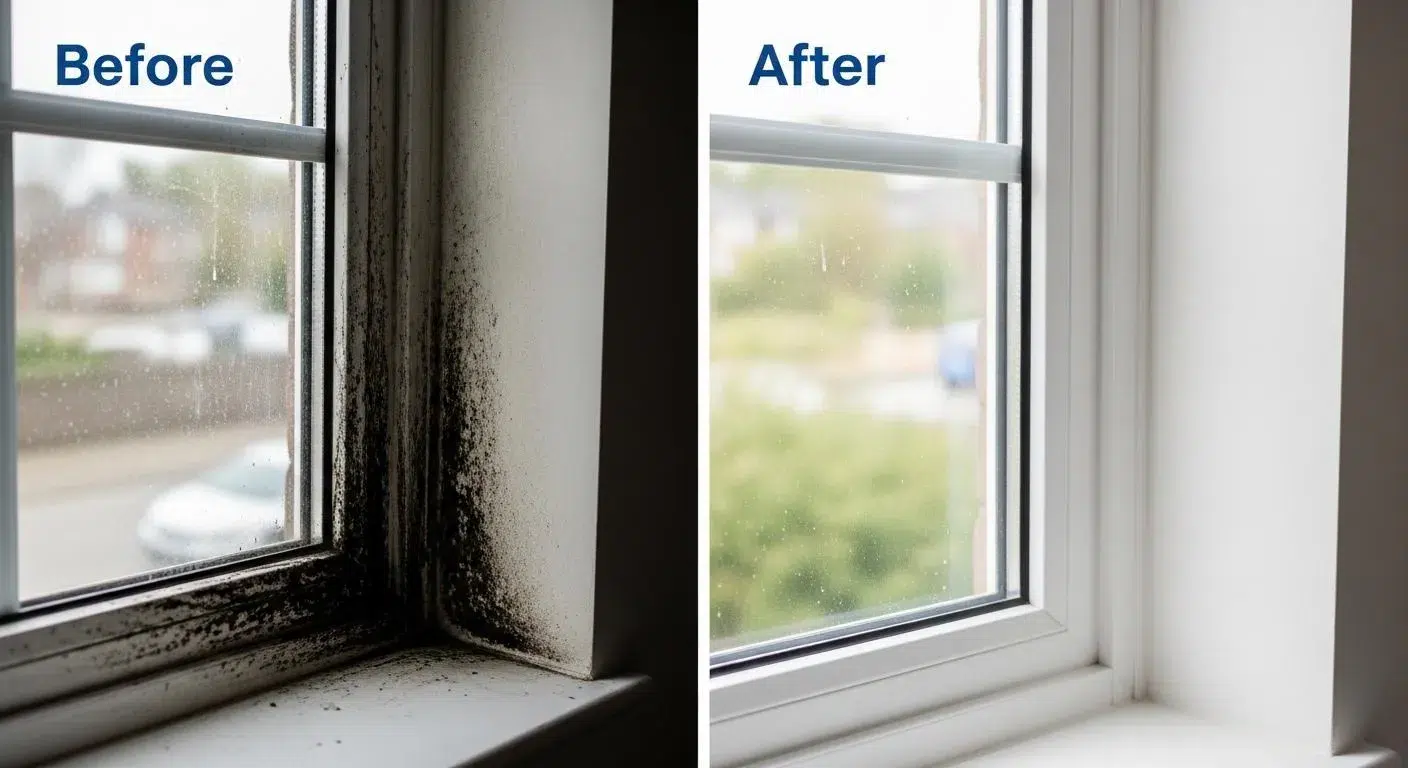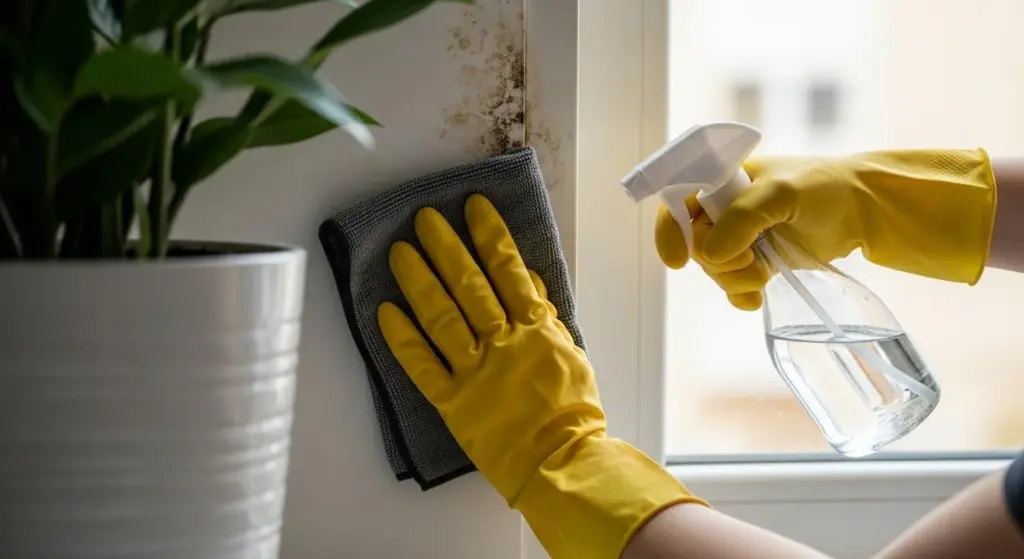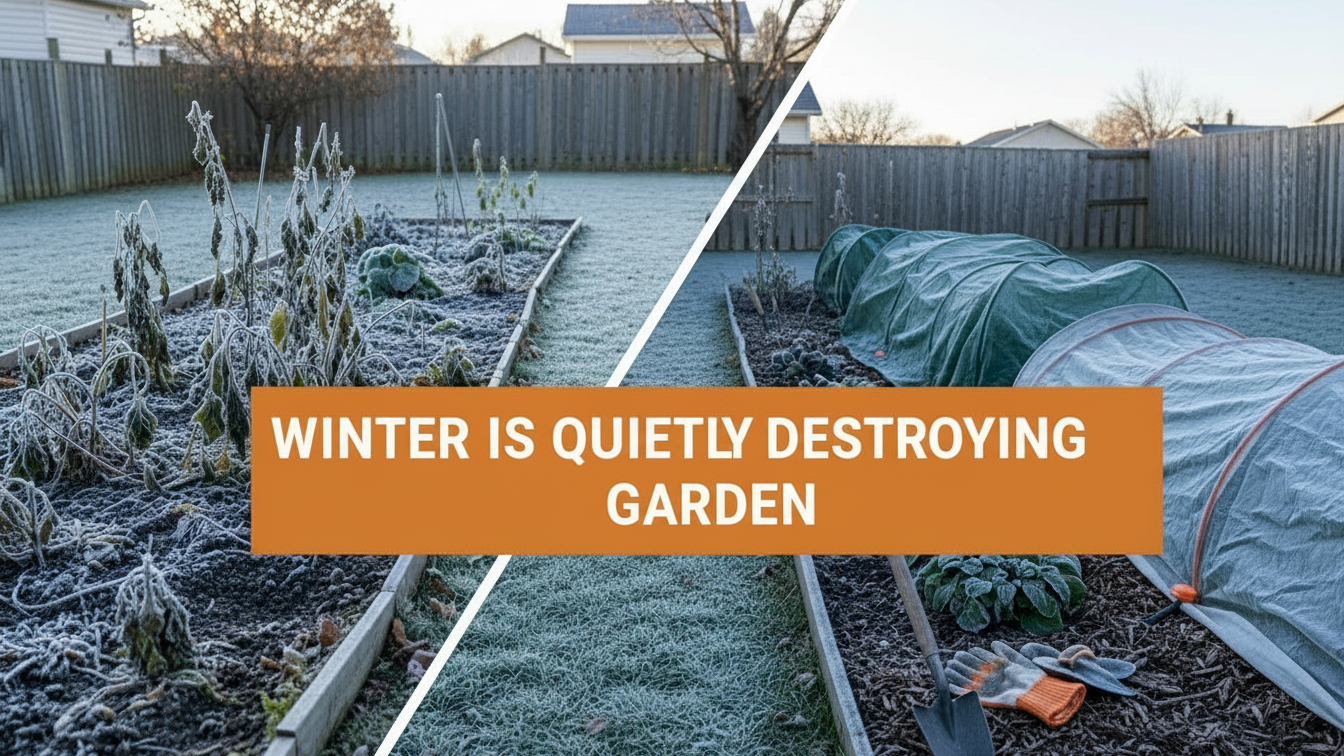Have you ever noticed a musty smell near your windows when the weather turns chilly?
Maybe your eyes feel irritated, your nose runs often, or you’re coughing more than usual. These can all be subtle signs of window mold exposure; a silent intruder in many Ontario homes during the fall.
As temperatures drop and indoor humidity rises, mold loves to grow in window corners, seals, and frames. Left unchecked, it can damage your home and seriously impact your health.
In this article, we’ll show you how to clean mold from windows in fall in Ontario using safe methods. And if you’re unsure or overwhelmed, it’s smart to consult Custodia for a professional mold inspection and care plan before it spreads.
What Are The Causes of Window Mold in Ontario?

Mold doesn’t just appear out of nowhere.
It slowly creeps in—quietly, silently, while you’re making dinner, reading with your kids, or enjoying the crisp fall air from inside your cozy home.
Here are 7 often-overlooked triggers that create the perfect conditions for mold on your windows during fall.
1. Sudden Temperature Drops And Warm Indoor Air
Cold outdoor air meets warm glass, forming condensation that feeds mold. It’s worse in fall when Ontario temperatures fluctuate fast—creating dampness on window edges and corners overnight.
2. Hidden Humidity From Everyday Activities
Cooking, showers, and drying clothes indoors raise humidity. Without proper ventilation, that moisture collects on windows—especially in sealed-up fall homes. That trapped vapor is mold’s favorite fuel source.
3. Leaky Seals And Old Window Caulking
Small cracks in caulking let in cold air and moisture. Over time, mold grows inside the seals. If you feel drafts or see black streaks—your windows may need resealing.
[Read: How Often Should Windows And Doors be Replaced in Ontario?]
4. Poor Insulation Or Single-Pane Glass
Older or single-pane windows lose heat quickly. The colder the glass, the more condensation forms. That moisture sticks around and encourages mold—especially near metal or wood frames.
5. Blocked Airflow From Curtains or Furniture
Closed drapes or furniture close to windows prevent warm air from circulating. That still air traps condensation and encourages mold, especially in shaded or hidden corners of your window frames.
6. Skipping Routine Cleaning And Checks
Mold loves undisturbed spots. When windows aren’t wiped down regularly, dust and dampness create perfect mold conditions. A quick monthly clean can stop spores before they start.
What Kind Of Mold Is Hiding On Your Window—and Why It Matters
Many homeowners spot the black or green dust and brush it off as superficial. Yet, what they see may be:
- Cladosporium – Common black/green mold on walls and window frames. Can trigger asthma and skin irritation.
- Penicillium – Looks fuzzy and blueish. Produces mycotoxins that worsen sinus problems.
- Aspergillus – Yellow-black patches in cold, damp corners. Known for airborne spores that can impair lung function.
- Stachybotrys (Black Mold) – Rare, but serious. Requires immediate remediation and professional testing if suspected.
Why it matters: Different mold types produce different allergens, irritants, and mycotoxins. That explains why one person might just sniffle, while another ends up wheezing or why some families see recurring mold even after cleaning.
Speaking of the recurring mold problem in Ontario,
Here Are The Risks of DIY Window Mold Cleaning
At first glance, tackling mold on your own might seem simple—just a bit of vinegar or peroxide, and you’re done.
But here’s the truth: mold isn’t just a surface problem. It can be deeper, sneakier, and far more harmful than most people realize.
Common DIY Pitfalls (That Could Cost You More Later)
- Incomplete Removal
Most home remedies only treat surface mold. Mold spores can remain deep in the sealants, wood grain, and window sashes—only to return when conditions are right.
- Health Exposure
Mold exposure—especially black mold—can aggravate asthma, allergies, and respiratory issues. Without the right gear or proper ventilation, you’re putting your lungs at risk.
- Cross-Contamination
Improper cleaning can spread mold spores to other areas of your home, including HVAC systems or nearby rooms.
- Damage to Windows
Scrubbing too hard or using the wrong chemical can damage wooden frames, peel paint, or cause sealants to crack—leading to costly repairs or drafts come winter.
Why Ontario Homeowners Trust Custodia’s Professional Mold Cleaning

If you’re a homeowner in Ontario—especially a senior or someone managing a family—you shouldn’t have to risk your health or peace of mind trying to scrub away mold on your own.
Our professional window cleaning service in Ontario is designed with your safety, comfort, and time in mind.
What Makes Us Different?
- Deep Cleaning Technology
We go beyond vinegar. Our eco-safe solutions penetrate frames, seals, and hidden corners where mold hides—so it doesn’t return next season.
- Senior-Safe Methods
Our team understands accessibility. We cater to seniors, families, and busy homeowners, ensuring no climbing, spraying, or heavy lifting on your end.
- Fall-Ready Service Plans
Ontario’s fall comes with its own moisture risks. Our seasonal maintenance plans help you prevent mold before it even starts—saving you stress in winter.
- No More Guesswork
From identifying the root cause (humidity, cracked sealants, condensation issues) to full mold remediation—we do it all with a smile and without the mess.
Your Family’s Health, Time & Home Are Worth It
When you factor in the time, safety risks, and repeat cleaning involved in doing it yourself, hiring a professional just makes more sense. Mold not only threatens your home’s air quality but also affects your home structure.
So if you’re thinking about “how to clean mold off window seals” or wondering “is it safe to clean black mold myself?” — the better question might be:
Why risk it at all when Custodia can handle it with care, speed, and expertise?
Call 1-833-410-4357 today or book your fall window mold cleaning online.
Your lungs and your windows will thank you.





